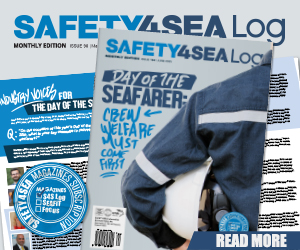As part of a recent initiative, ISWAN highlights that ”being an ally isn’t just a way to support your fellow crew members, it’s a way to support yourself too”. Being an ally, and feeling that others are your allies, builds friendships and networks of support and makes the journey easier for everyone.
However, ISWAN points out that speaking up as an ally can be challenging at first. ”Remember to keep a positive approach: you are not trying to shame or punish someone; you are trying to educate them and improve the onboard environment.
As an ally, don’t speak over or in place of the person you are trying to be an ally to; if you think what is happening is wrong, own your feelings and speak to them. If they are trying to handle it themselves just support them, don’t try to take over for them. Then you can approach them later and ask what else you can do to help
7 non-confrontational ways to be an ally
#1 Calmly ask the person to explain their words or actions.
For instance: “Why would you say that Carla isn’t smart enough to complete that task? She is a fully qualified engineer and has done it hundreds of times.”
#2 Speak from your own perspective and feelings.
For instance: “I would rather you not make sexual remarks about our crewmates. I think it’s inappropriate and it makes many of us uncomfortable.”
#3 Speak from a perspective of friendship and begin with your concern for the person.
For instance: “I know you like to joke around, but I think some of your jokes could be seen as harassment or even bullying by others. I don’t think you
mean it that way, but the company is taking those things very seriously now and I don’t want you to get disciplined or lose your job. I think you should re-consider some of your language so you don’t get reprimanded.”
#4 Educate the person about the possible consequences of their actions, as well as the harm they could inflict on others and even on themselves.
For instance: “When you scream and shout at people, they really don’t like it, and I’m afraid some of our crew are considering quitting or transferring. I don’t want to be short-handed again like we were last year. Can you take a few minutes to cool off before you talk to someone who has made a mistake? And maybe focus on helping them improve rather than just shouting insults”
#5 Team up
If you do not know the person well, if you think they may respond with hostility, or if you think they will not be convinced by just one person, recruit a second person to help you to speak with them.
#6 Indirect approach
Some particularly tense or high-pressure situations are not the time or place for education, but you can interrupt to ask an unrelated question or to give information about a workrelated issue to break up the problematic situation and divert attention away from those on the receiving end of harmful behaviour
#7 Inform an authority
Report the incident to your manager, other senior crew or officers, the designated person ashore (DPA) or other senior shore-side management, especially if you perceive that the person being targeted might be in danger, or if the actions pose a safety hazard.






























































